The UK Ministry of Defence (MoD) has successfully tested a high-power microwave weapon, dubbed RapidDestroyer, designed to neutralize drone swarms, a growing threat on modern battlefields like Ukraine. Developed by a Thales-led consortium, the truck-mounted system uses radio frequency energy to disable drone electronics, offering a cost-effective countermeasure against unmanned aerial vehicles (UAVs). With over 100 drones defeated in trials, according to the Financial Times, this technology could reshape air defense strategies, though its limitations spark critical questions about scalability and collateral risks.
A Breakthrough in Counter-Drone Technology
The RapidDestroyer, a radio frequency directed energy weapon (RFDEW), represents a leap in addressing the proliferation of low-cost, agile drones. In trials conducted in West Wales, the system neutralized two swarms of eight drones each and defeated over 100 UAVs across multiple tests, according to the MoD. Unlike traditional missile-based defenses, which target single threats at high cost, RapidDestroyer emits a wide beam of electromagnetic energy, disrupting or destroying drone electronics within a 0.62-mile (1 km) range for approximately $0.13 (10p) per shot.
“This significant experiment exemplifies the strength of British innovation,” said Maria Eagle, UK Minister for Defence Procurement, highlighting the system’s potential to bolster national security while supporting 135 skilled jobs in Northern Ireland and southeast England.
The system’s development, part of the MoD’s Project Ealing, responds to the evolving nature of warfare, where drones have become pivotal. In Ukraine, drones account for up to 80% of combat casualties, either through direct attacks or surveillance, as noted by Roman Kostenko, chair of Ukraine’s parliamentary defense committee. RapidDestroyer’s ability to engage multiple targets simultaneously positions it as a critical tool for countering swarm tactics.
Technical Design and Operational Mechanics
RapidDestroyer operates by emitting high-intensity radio frequency waves that overload drone circuits, causing them to malfunction or crash. Unlike jamming systems that disrupt communications, this “hard-kill” mechanism physically damages electronics, making it effective against drones resistant to electronic warfare. The system, mounted on a flatbed truck, requires significant power, a challenge for mobility and deployment in austere environments.
The Thales-led consortium, including QinetiQ, Teledyne e2v, and Horiba Mira, has integrated automation, allowing a single operator to manage the system. Its design supports land-based applications but shows promise for naval and airborne platforms, aligning with broader air defense networks. The MoD has invested over $50 million (£40 million) in RFDEW research, underscoring its strategic priority.
However, the technology is not without flaws. Its wide-area beam, while ideal for swarms, risks collateral damage to friendly electronics, limiting its use near civilian infrastructure like airports.
Justin Bronk, Senior Research Fellow at the Royal United Services Institute, cautions, “High-powered microwave systems are potentially a very effective tool for defence against large numbers of [drones]… but they are not a one-size-fits-all solution.”
Industry Context: A Global Race for Directed Energy Weapons
The RapidDestroyer is part of a global push to develop directed energy weapons (DEWs) as cost-effective alternatives to traditional defenses. The U.S. has parallel systems, such as the Tactical High-power Operational Responder (THOR), a shipping container-sized microwave weapon, and the Epirus-developed Leonidas for naval applications. The U.S. Navy’s Project Meteor, slated for testing in 2026, aims to counter anti-ship ballistic missiles, indicating the technology’s broader potential.
In Ukraine, the electromagnetic battlefield has intensified, with jamming compromising GPS-guided systems like the M142 HIMARS. A senior UK military official described the dynamic as “a measures [vs] countermeasures game,” noting that drones can be shielded with materials blocking electromagnetic fields. This cat-and-mouse dynamic drives innovation, as adversaries develop fiber-optic-controlled or radiation-hardened drones to evade RFDEWs.
The market for counter-drone systems is expanding rapidly, projected to reach $6.8 billion by 2027, driven by military and critical infrastructure needs. Companies like Thales and Epirus are well-positioned, but competition from firms like Raytheon and Lockheed Martin, which develop laser-based DEWs, adds complexity. Regulatory hurdles, including electromagnetic spectrum management and safety standards, could slow deployment, particularly in civilian-adjacent areas.
Implications for Modern Warfare
The RapidDestroyer’s success signals a shift toward scalable, economical defenses against asymmetric threats. Its low cost per engagement contrasts sharply with missile systems, which can cost thousands per shot. For military bases in remote areas or warships at sea, the system offers a robust layer of protection. However, its power demands and truck-based design raise questions about battlefield portability and integration with mobile units.
The technology’s potential in Ukraine, where drone swarms overwhelm conventional defenses, is significant. UK Defence Intelligence estimates Ukraine faced over 18,000 drone attacks last year, highlighting the urgency of effective countermeasures. Yet, the system’s indiscriminate energy beam and limited range (0.62 miles) may restrict its utility in complex urban environments or against advanced drones with countermeasures.
Skepticism persists about the technology’s maturity. The MoD acknowledges that the current demonstrator will not enter service, with data from trials informing future iterations. Scaling range and power while reducing size and energy demands remains a technical challenge. Additionally, adversaries’ rapid adaptation—evidenced by Russia‘s use of fiber-optic drones—could blunt the system’s effectiveness over time.
DroneXL’s Take: A Promising Yet Imperfect Solution
For DroneXL readers, from professional operators to recreational pilots, the RapidDestroyer underscores the accelerating arms race in drone warfare. Its ability to neutralize swarms addresses a critical vulnerability exposed in Ukraine, offering militaries a tool to counter low-cost UAVs that threaten high-value assets. The $0.13-per-shot cost is a game-changer, potentially democratizing advanced air defense for smaller forces.
However, the system’s limitations warrant caution. Its power-hungry, truck-mounted design is impractical for rapid-response scenarios, and its wide-area effect could disrupt commercial drones or civilian electronics, raising Legal and ethical concerns. For drone operators, this technology signals a need for enhanced shielding or autonomous navigation to evade RFDEWs. The industry must balance offensive and defensive innovation, ensuring UAVs remain viable tools for surveillance, logistics, and beyond.
As the MoD refines this technology, DroneXL sees RapidDestroyer as a pivotal step, but not a panacea. Its success will hinge on addressing portability, range, and counter-countermeasure challenges. For now, it’s a bold move in a high-stakes game, with implications for how drones—and their counters—shape the future of warfare.
Photo courtesy of Ian Bayley / UK MoD
Discover more from DroneXL.co
Subscribe to get the latest posts sent to your email.
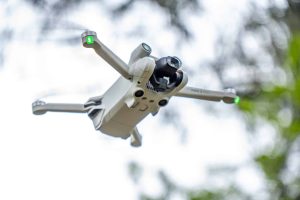







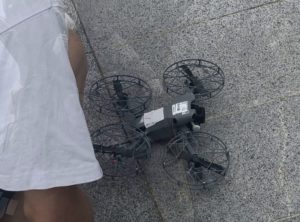

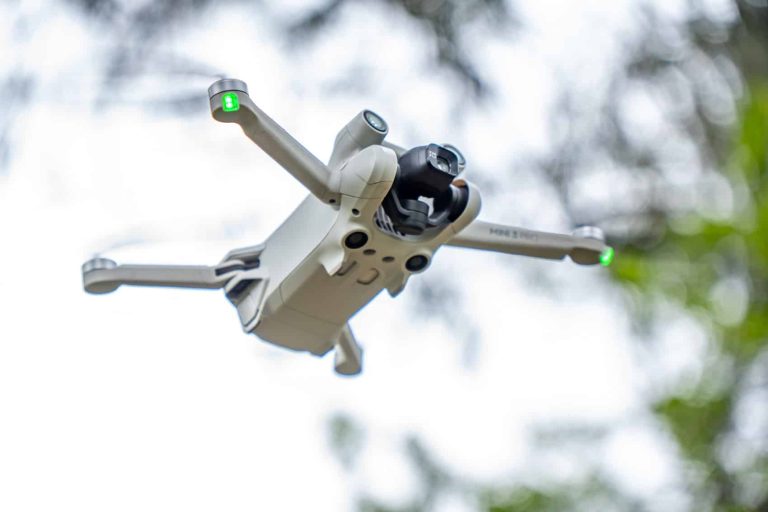




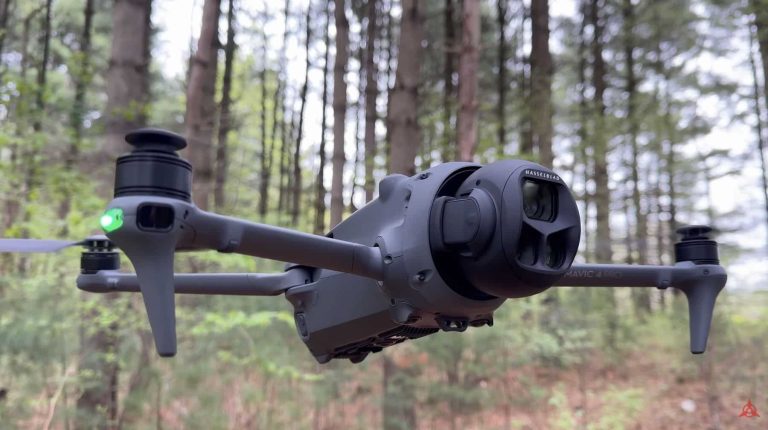



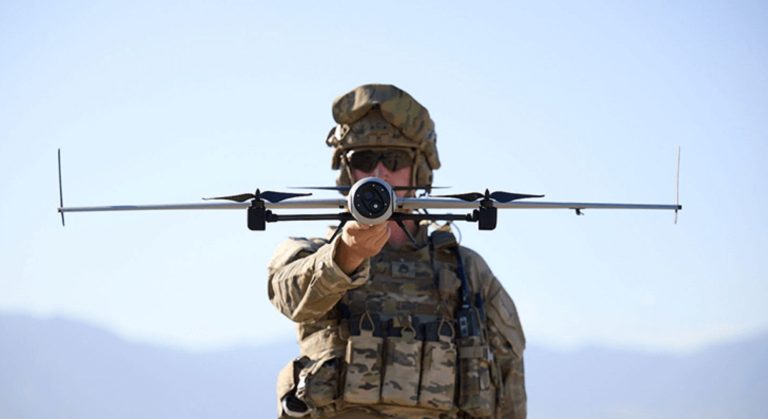
+ There are no comments
Add yours